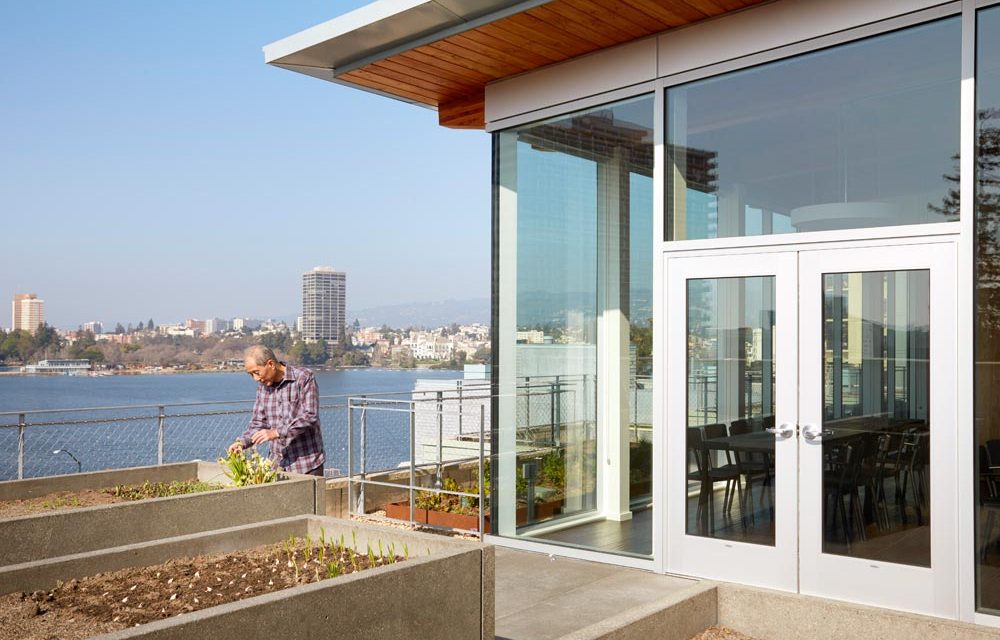The American Institute of Architects’ (AIA) Housing Knowledge Community, in conjunction with the Office of the Secretary of the U.S. Department of Housing and Urban Development (HUD), recognized four recipients of the 2016 AIA/HUD Secretary Awards. The categories of the program include (1) Excellence in Affordable Housing Design (2) Creating Community Connection Award (3) Community-Informed Design Award and (4) Housing Accessibility – Alan J. Rothman Award. These awards demonstrate that design matters, and the recipient projects offer examples of important developments in the housing industry.
“Each of these developments are innovative housing opportunities offering seniors and families alike a place to thrive,” said HUD Secretary Julián Castro. “These winners prove that affordable and accessible housing can become part of the fabric of any neighborhood and reinforce the principles of inclusiveness and opportunity.”
The descriptions below give a brief summary of the projects. You can learn more about these projects by clicking on the name of the project/firm name.
Category One: Excellence in Affordable Housing- Recognizing architecture that demonstrates overall excellence in terms of design in response to both the needs and constraints of affordable housing.
Lakeside Senior Apartments; Oakland, CA
David Baker Architects
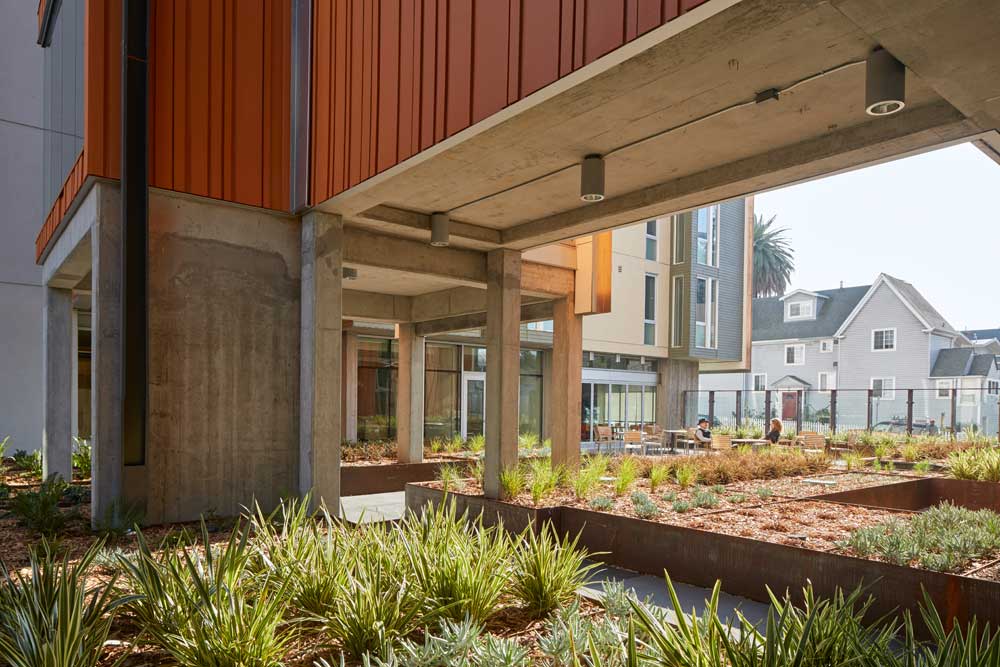
Lakeside Senior Apartments in Oakland, CA/David Baker Architects. Photo: Bruce Damonte
The project is home to 91 very-low-income and special-needs homeless seniors, many of whom have been displaced with the Bay Area’s rapidly rising housing costs. The building has extensive on-site services and is designed to support independent living, with strong transit connections to downtown Oakland and San Francisco and access to crucial retail offerings, including a pharmacy and grocery. The high-density housing—138 units per acre—provides indoor and outdoor community spaces at both the ground floor and upper levels. The central west-facing main courtyard opens visually toward the street and is warmed by afternoon sun. A rooftop suite of community spaces overlooks the lake, maximizing views for the most users. Designed with a complementary series of sustainable strategies, the building is pending LEED for Homes Mid-Rise Platinum Certification.
Category Two: Creating Community Connection Award – Recognizing projects that incorporate housing within other community amenities for the purpose of either revitalization or planned growth.
Dorchester Art + Housing Collaborative (DA+HC); Chicago
Landon Bone Baker Architects
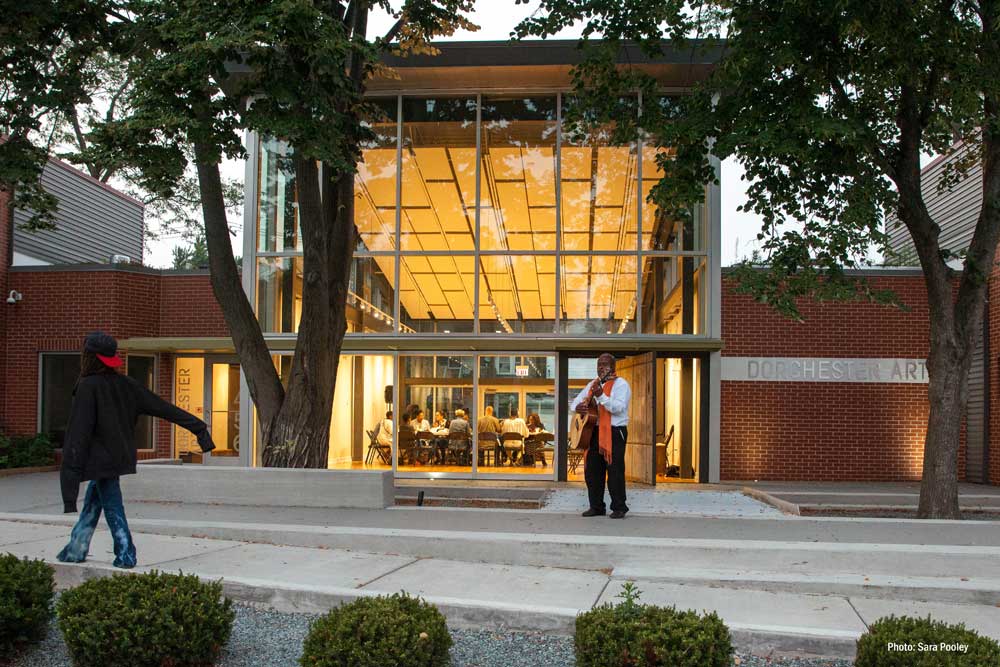
Dorchester Art + Housing Collaborative (DA+HC) in Chicago/Landon Bone Baker Architects.
As a former Chicago Housing Authority project sitting vacant since 2007, the Dorchester Art + Housing Collaborative (DA+HC) stands as the cornerstone of the recently revitalized Greater Grand Crossing neighborhood. The project embodies a successful collaboration between private, public, and non-profit sectors committed to transforming the neighborhood into a cultural incubator through the reactivation of abandoned buildings and cultural foundations in the under-invested neighborhood. The DA+HC features a rehabilitated block of 32 of the original 36 two- and three-bedroom townhouse units that now provide mixed-income housing. Four of the center units were removed to create the focus of the development—a 2200-square-foot Arts Center complete with a dance studio, work and tech shops, and public meeting space, offering arts creation, education, performance, and display space for people of all ages.
Category Three: Community-Informed Design Award – Recognizing design that supports physical communities as they rebuild social structures and relationships that may have been weakened by outmigration, disinvestment, and the isolation of inner-city areas.
Disaster Recovery Round 2 (DR2); Houston
buildingcommunityWORKSHOP
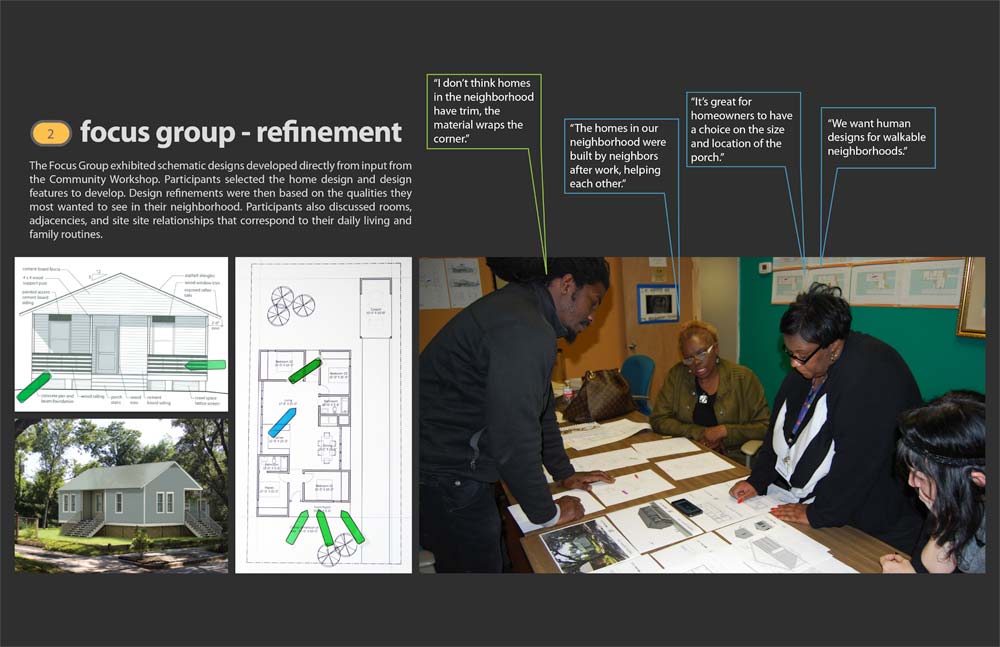
Disaster Recovery Round 2 (DR2) in Houston/buildingcommunityWORKSHOP.
Disaster Recovery Round 2 (DR2) launched five years after Hurricane Ike devastated the Texas Gulf Coast. The DR2 program sought to fill the remaining gap in home repair and replacement while offering homeowners choice in their disaster recovery experience. DR2 was designed to bring together the expertise of local design architects and insight from residents directly affected by the storm to build single-family, high-quality, cost-effective, sustainable designs. Through a series of community lead charrettes, the design team gathered contextual information for every affected neighborhood, including demographic research and documentation of neighborhood form and character. This approach created a collaborative relationship with the city, residents, and local designers ensuring the process supported local professionals as well as benefited residents. Over 206 homeowners have met with the design team to select the housing options that best meet their needs.
Category Four: Housing Accessibility | Alan J. Rothman Award – Recognizing exemplary projects that demonstrate excellence in improving housing accessibility for people with disabilities.
Port Townsend Residence; Port Townsend, WA
FabCab
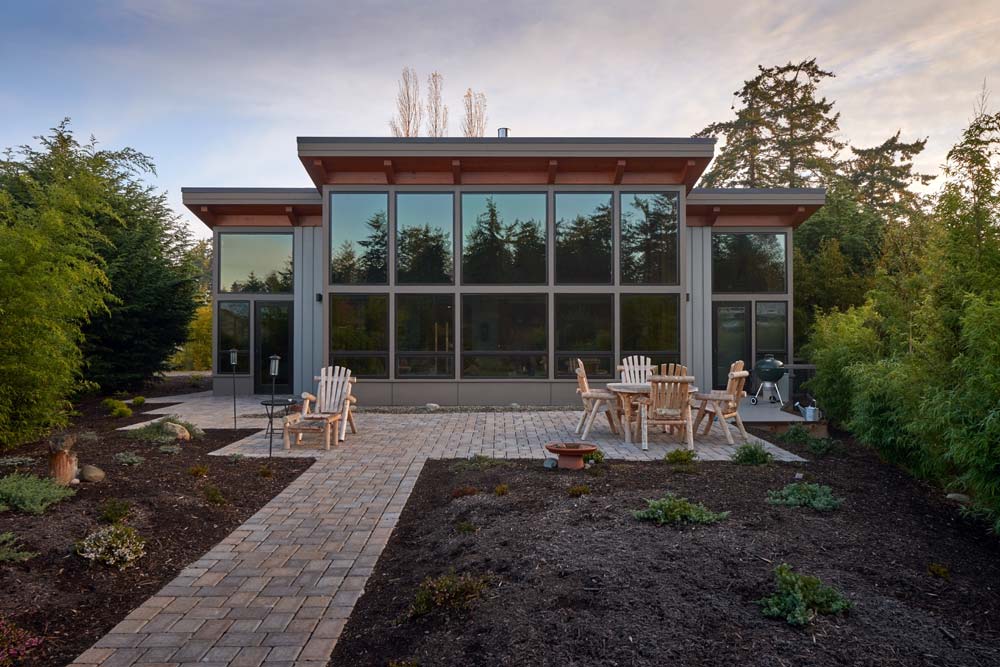
Port Townsend Residence, WA/FabCab. Photo: Dale Lang
This house was designed to meet the homeowners goal of creating a home accommodating to them both – he uses a power wheelchair whereas she does not. Careful site planning was essential to create a continuous accessible route from the street through the home to the terrace and onto the common garden space. The attached carport accommodates the wheelchair-accessible van with its ramp, creating a covered route from the front entrance into the van. An open plan ensures easy circulation within a modest 1,325 sf footprint. The telescoping pocket doors to the bedrooms also allow flexibility in how to use the rooms and how connected they are to the living spaces. The entry door and sidelight feature vertical glazing to allow viewing of the external approach from any height. The kitchen and bathrooms are designed to facilitate use from both standing and seated positions. This project demonstrates that universal design and accessibility features are compatible with a warm and modern aesthetic.
The jury for the 2016 AIA/HUD Secretary Awards includes: Jamie Blosser, AIA (Chair), Atkin Olshin Schade Architects; Ariella Cohen, Editor-in-Chief, Next City; Kevin Harris, FAIA, Kevin Harris Architect, LLC; David Lee, FAIA, Stull and Lee, Inc.; Rachelle Levitt, U.S. Department of Housing and Urban Development; Lynn M. Ross, U.S. Department of Housing and Urban Development and Suman Sorg, FAIA, Sorg & Associates, P.C.
About The American Institute of Architects
Founded in 1857, the American Institute of Architects consistently works to create more valuable, healthy, secure, and sustainable buildings, neighborhoods, and communities. Through nearly 300 state and local chapters, the AIA advocates for public policies that promote economic vitality and public wellbeing. Members adhere to a code of ethics and conduct to ensure the highest professional standards. The AIA provides members with tools and resources to assist them in their careers and business as well as engaging civic and government leaders and the public to find solutions to pressing issues facing our communities, institutions, nation and world. Visit www.aia.org.

